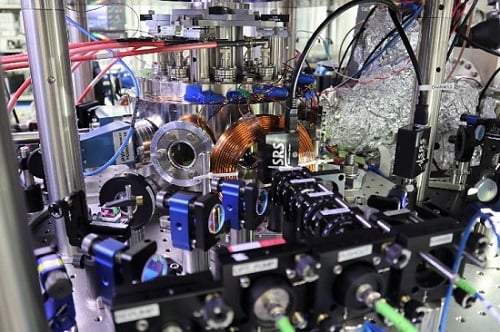
Japan's Institute for Molecular Science Accelerates Quantum Computing Efforts
OKAZAKI, Japan, March 13, 2024 — The Institute for Molecular Science (IMS), a Japanese inter-university research institute, is working with industrial partners to accelerate the development of neutral atom quantum computing based on research work led by Kenji Ohmori. IMS plans to launch a startup company by the end of its FY2024 and begin development of neutral atom quantum computers.

Experimental setup for the cold atom (neutral atom) quantum computer developed by the Kenji Ohmori group at the Institute for Molecular Science. Courtesy of Takafumi Tomita.
Ohmori’s group uses optical tweezers and microscope technologies to control a large number of high-quality qubits on a flat surface, as well as ultrafast two-qubit gates that use an ultrafast laser to create a quantum entanglement between two qubits in just 6.5 ns. Importantly, the approach operates at room temperature.
“Although we have absolute confidence in our basic technology, the development of practical quantum computers requires the integration of a variety of enabling technologies including conventional electronics, software, system engineering, and architecture,” Ohmori said.
The Commercial Preparatory Platform established by IMS has been joined by ten industrial partners comprised of companies and financial institutions. Among them are blueqat Inc., Development Bank of Japan Inc., Fujitsu Limited, Groovenauts, Inc., Hamamatsu Photonics K.K., Hitachi, Ltd., and NEC Corporation.
Neutral atom computing is being pursued by companies including Atom Computing, Infleqtion, and QuEra Computing.
/Buyers_Guide/Hamamatsu_Corporation/c5841
/Buyers_Guide/Fujitsu_Optical_Components_Ltd/c33092
/Buyers_Guide/Hitachi_High-Tech_Corp/c28317